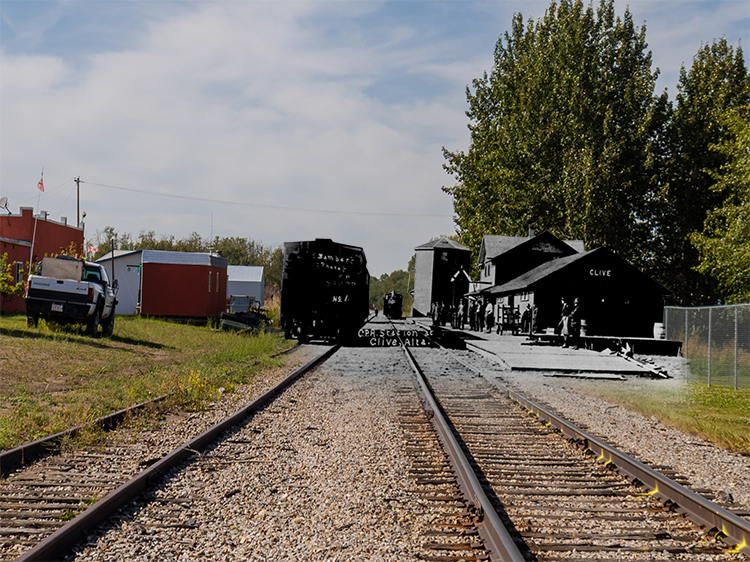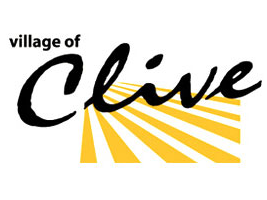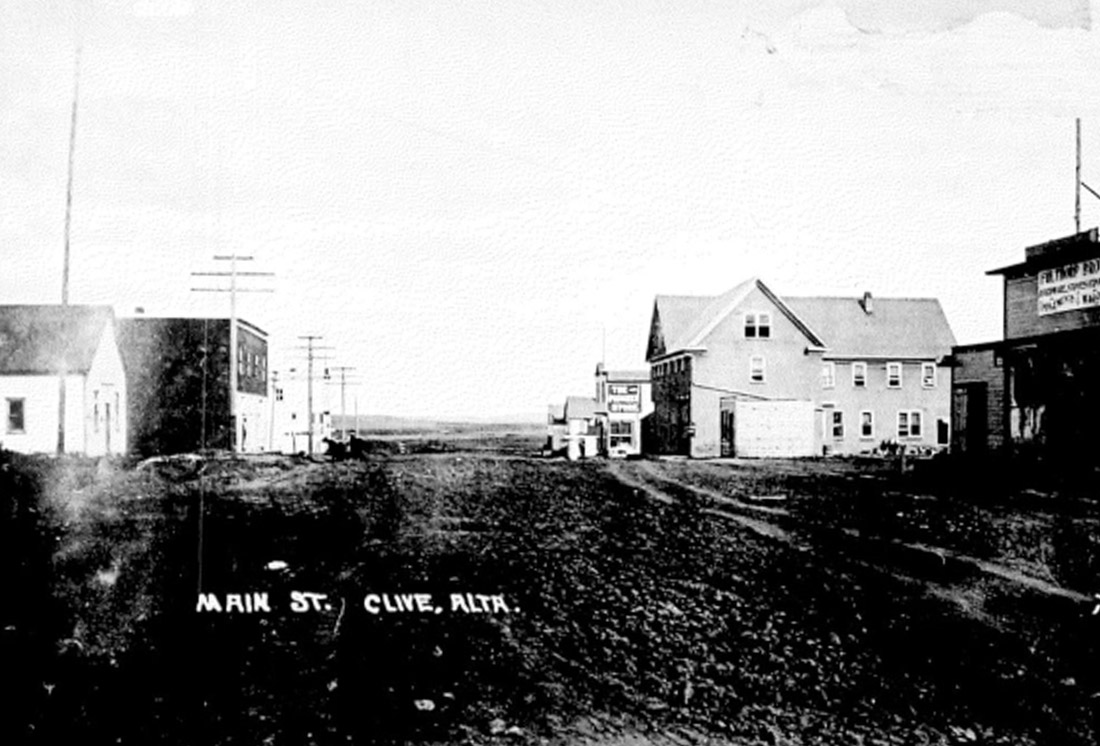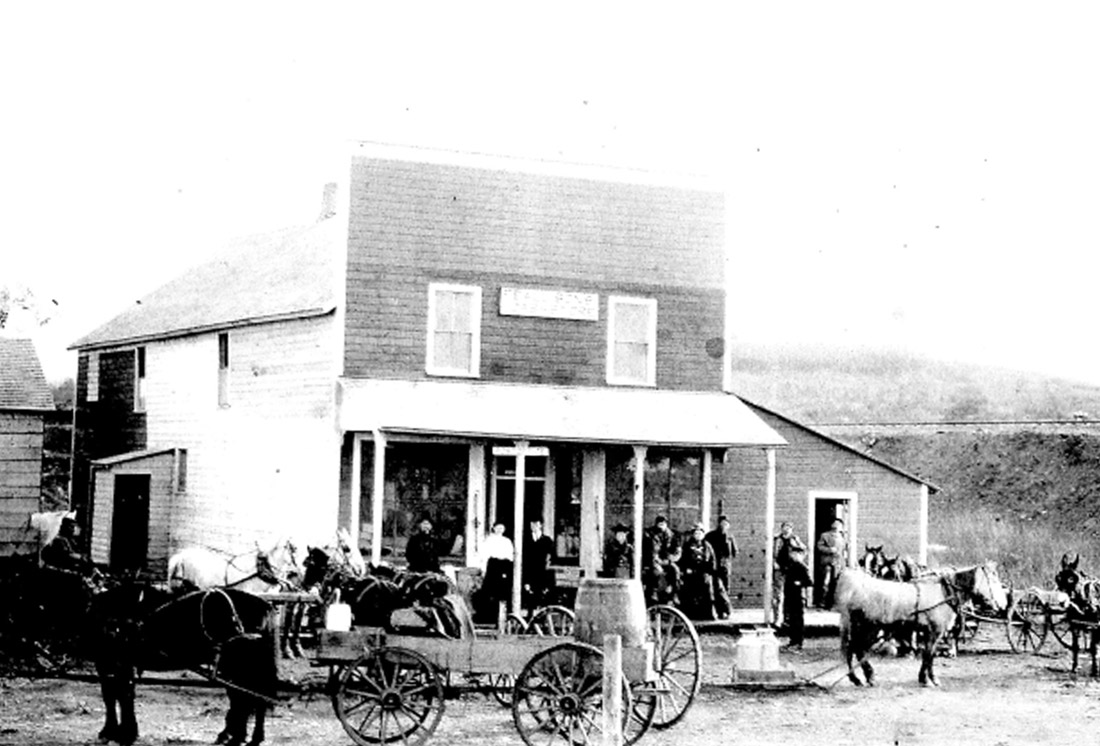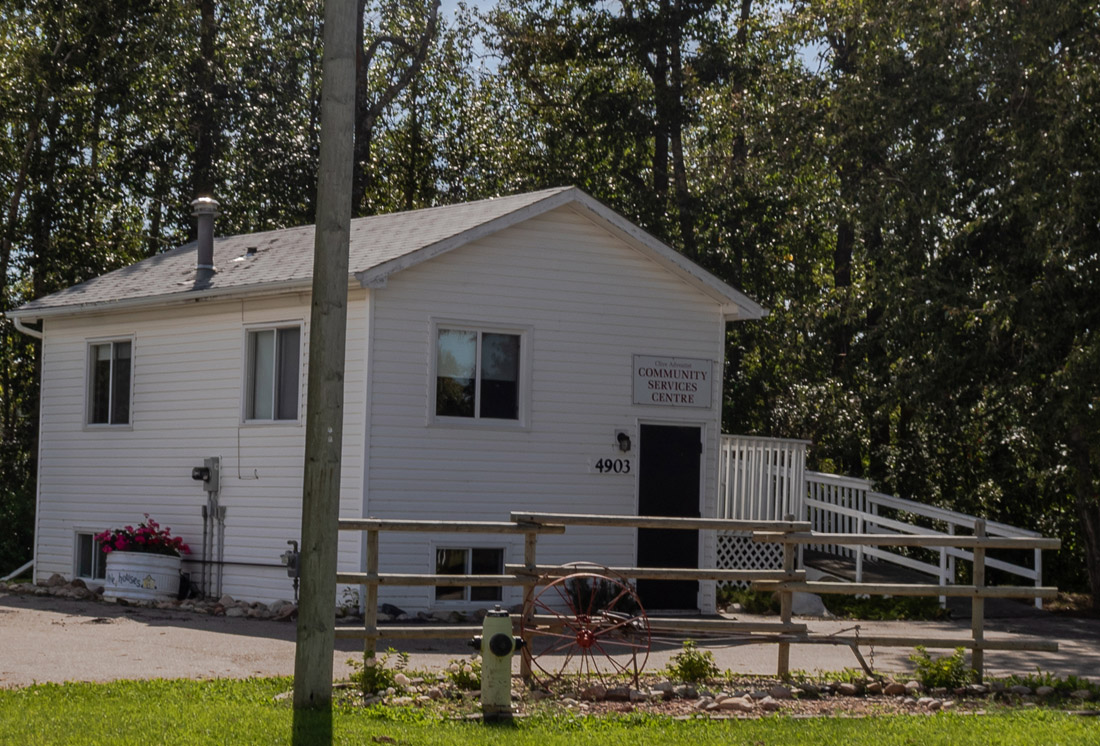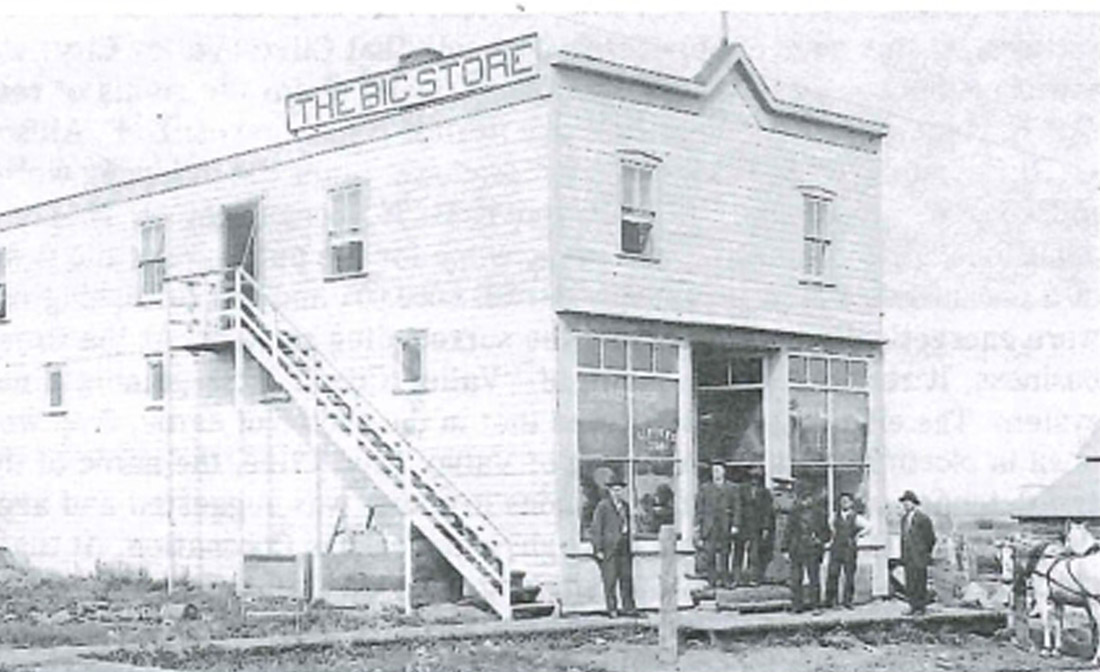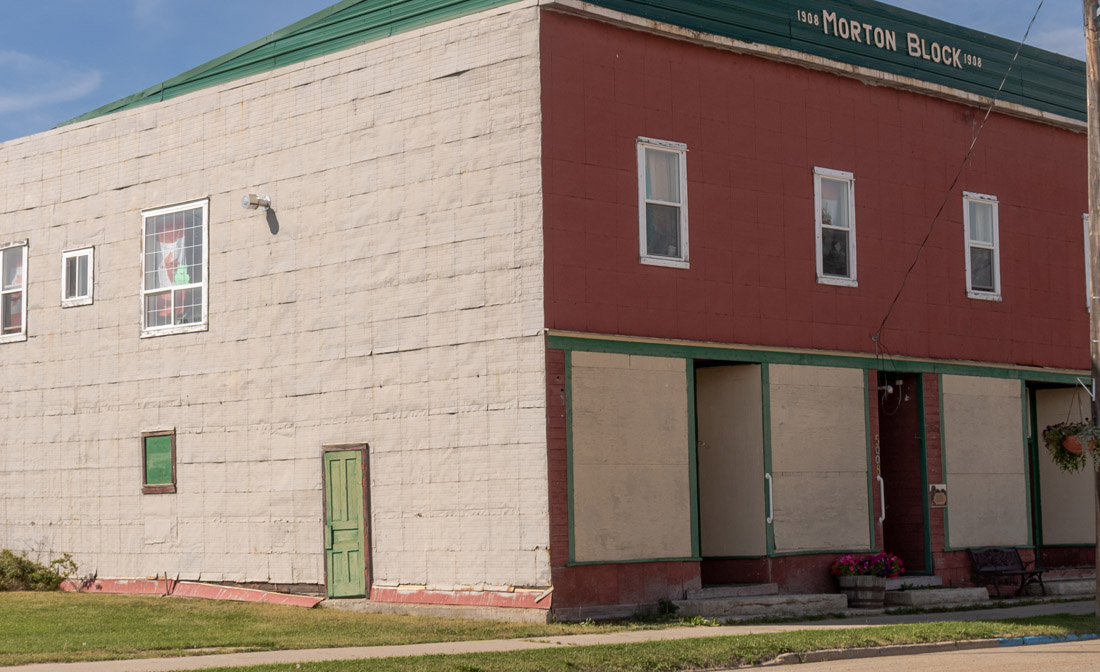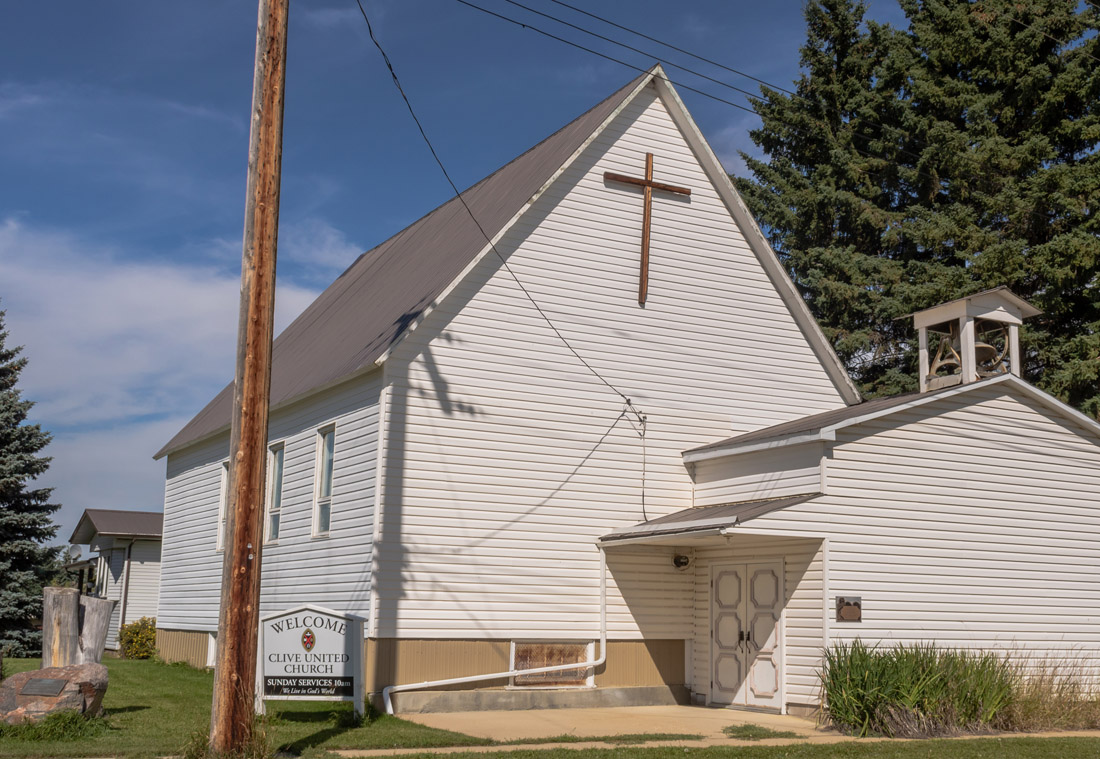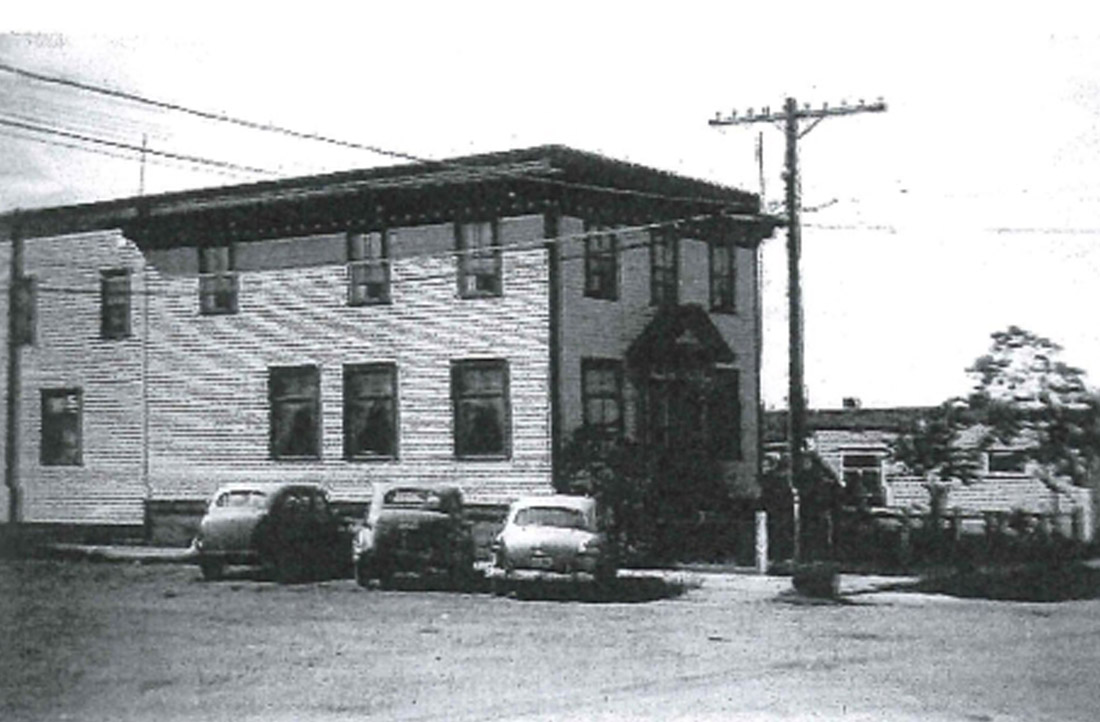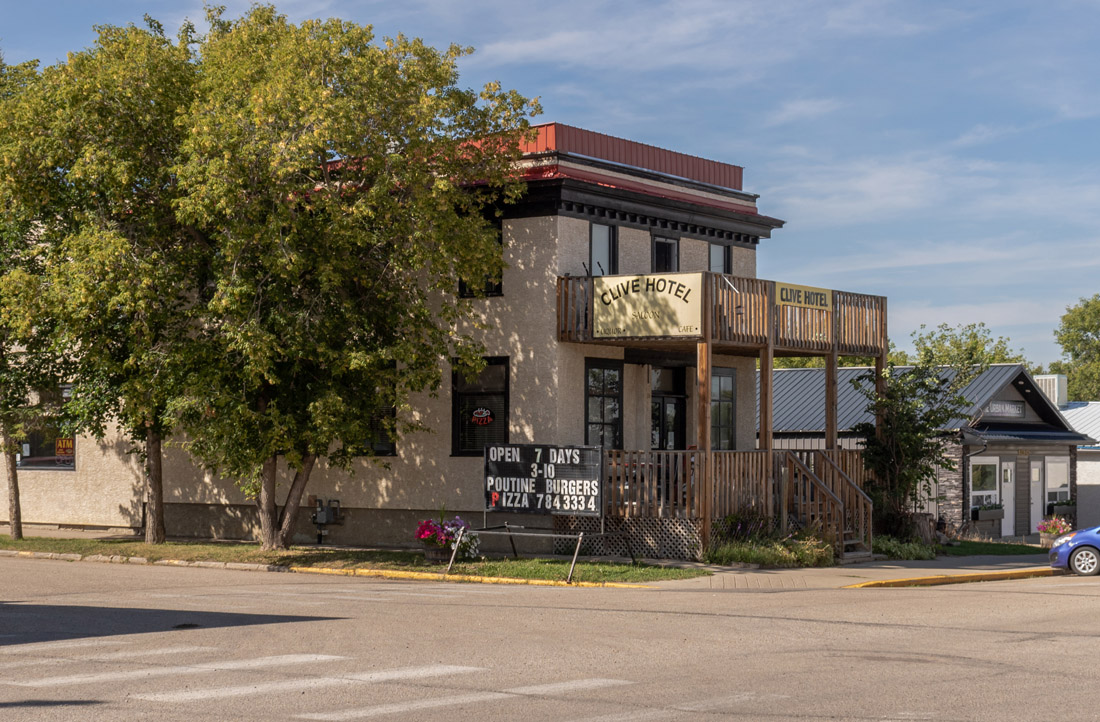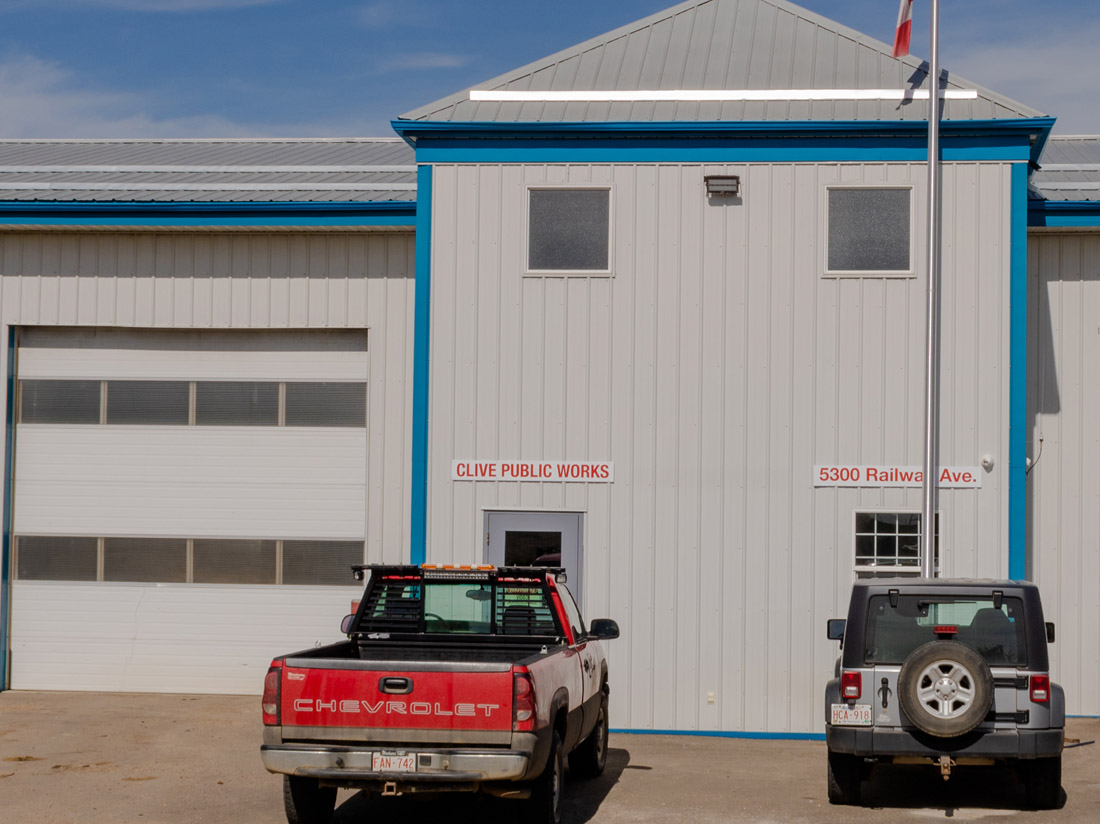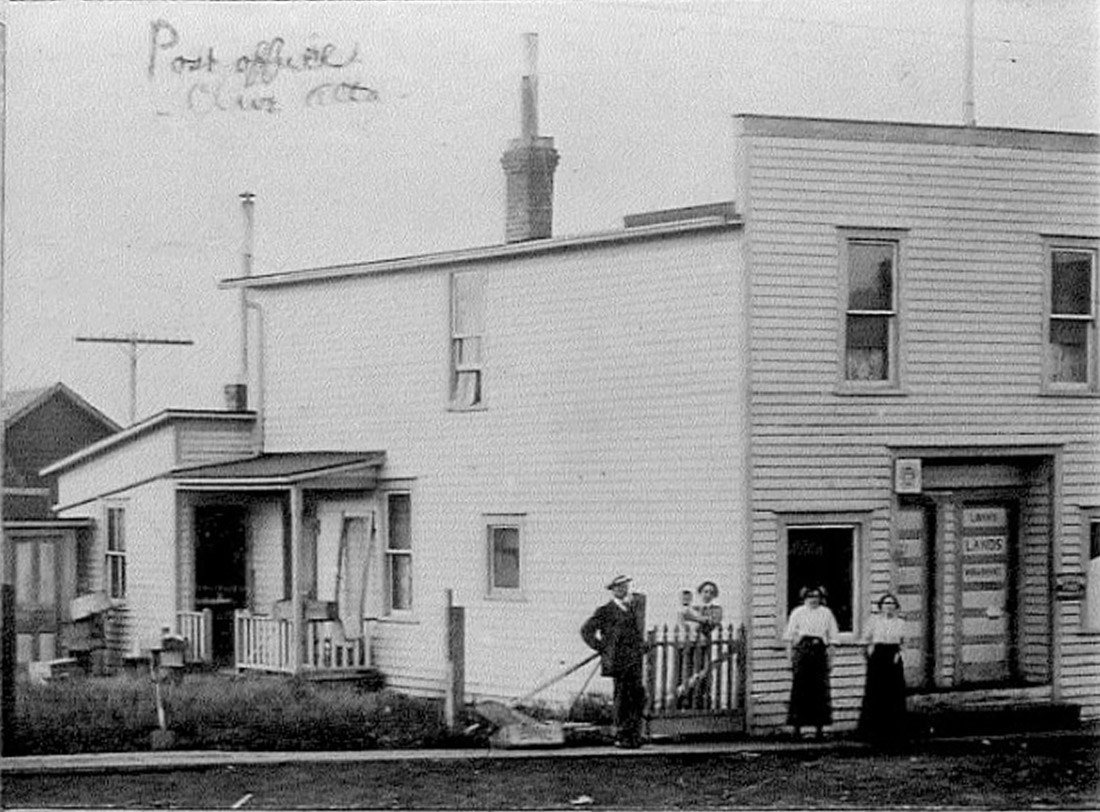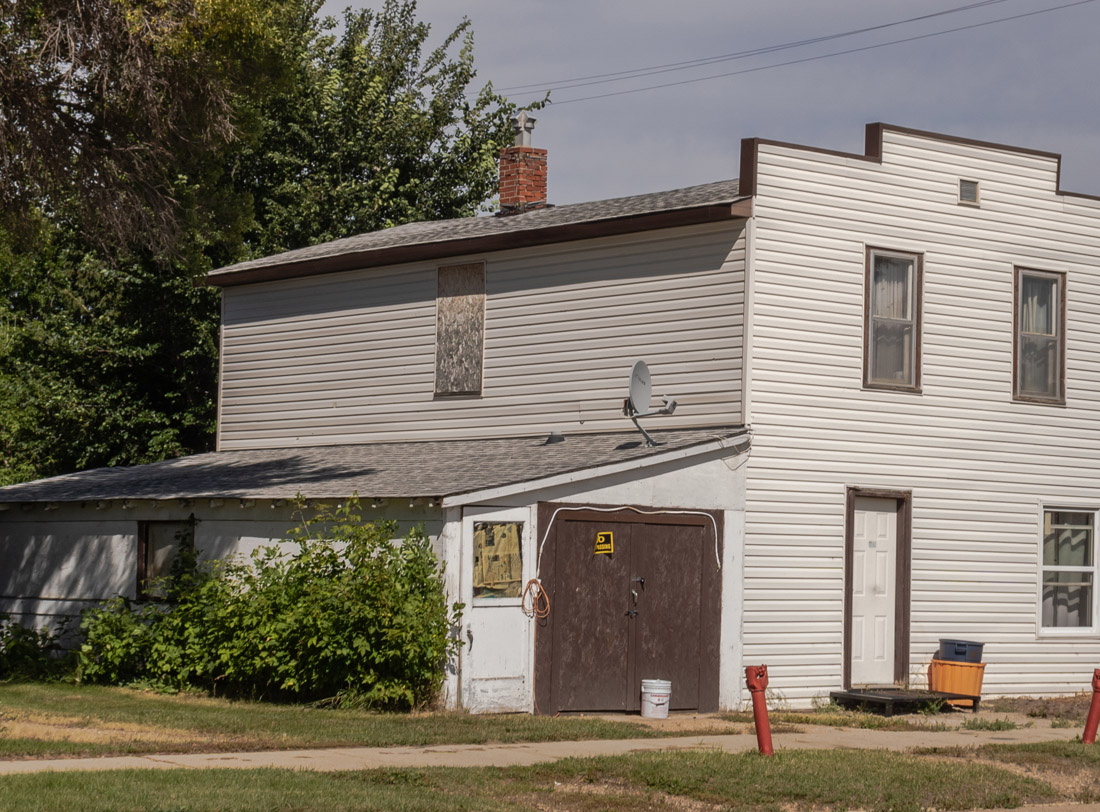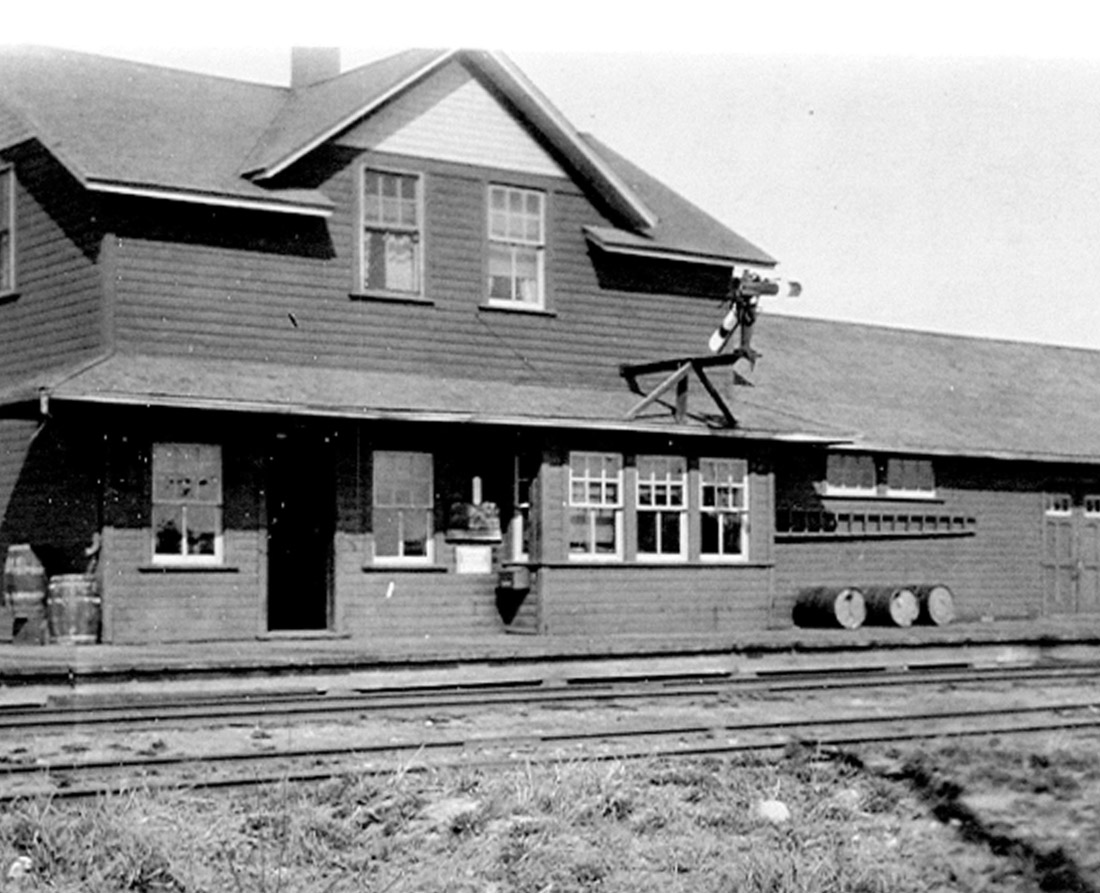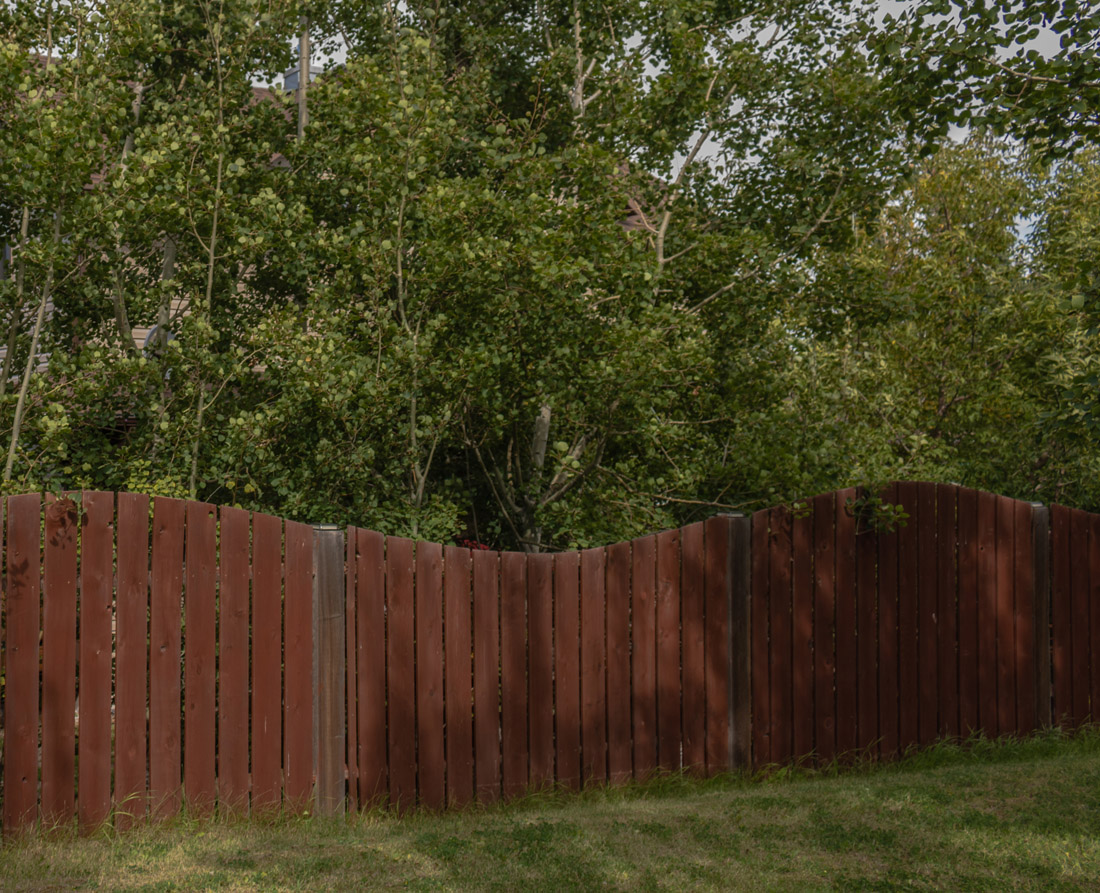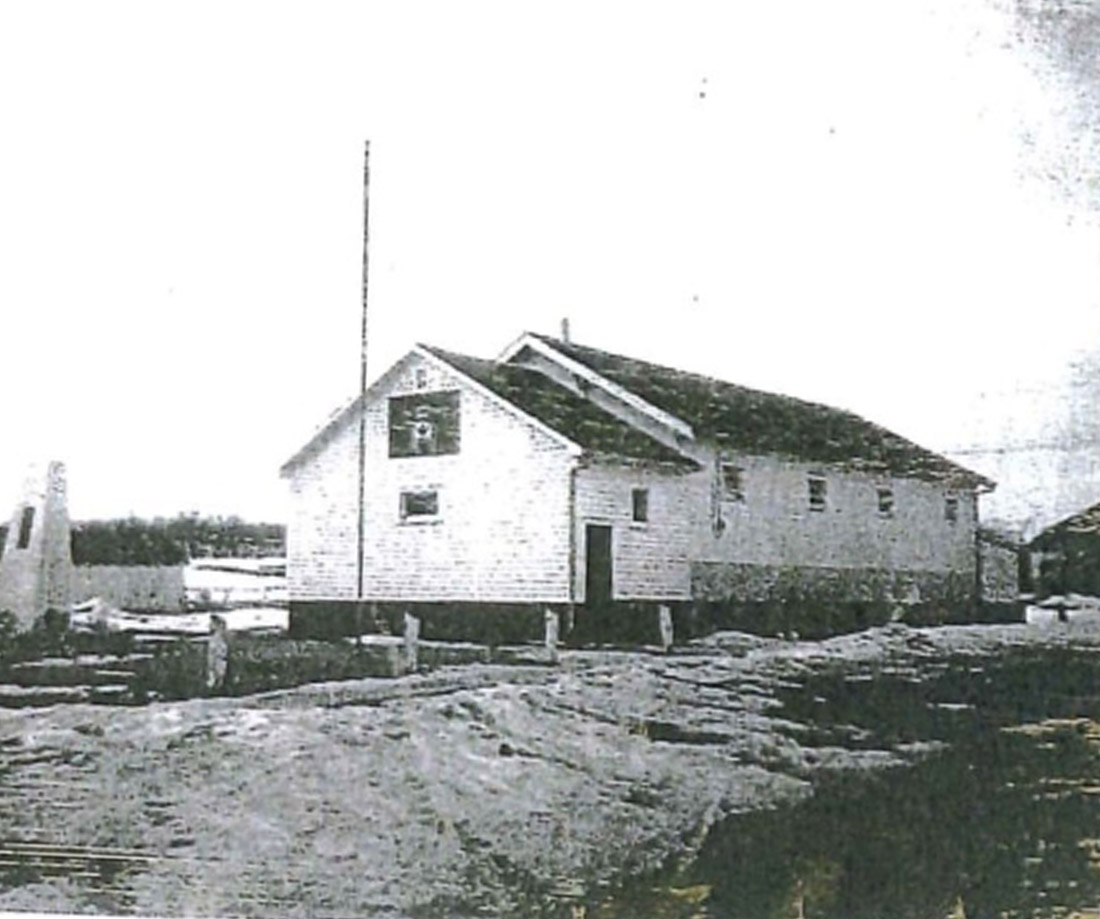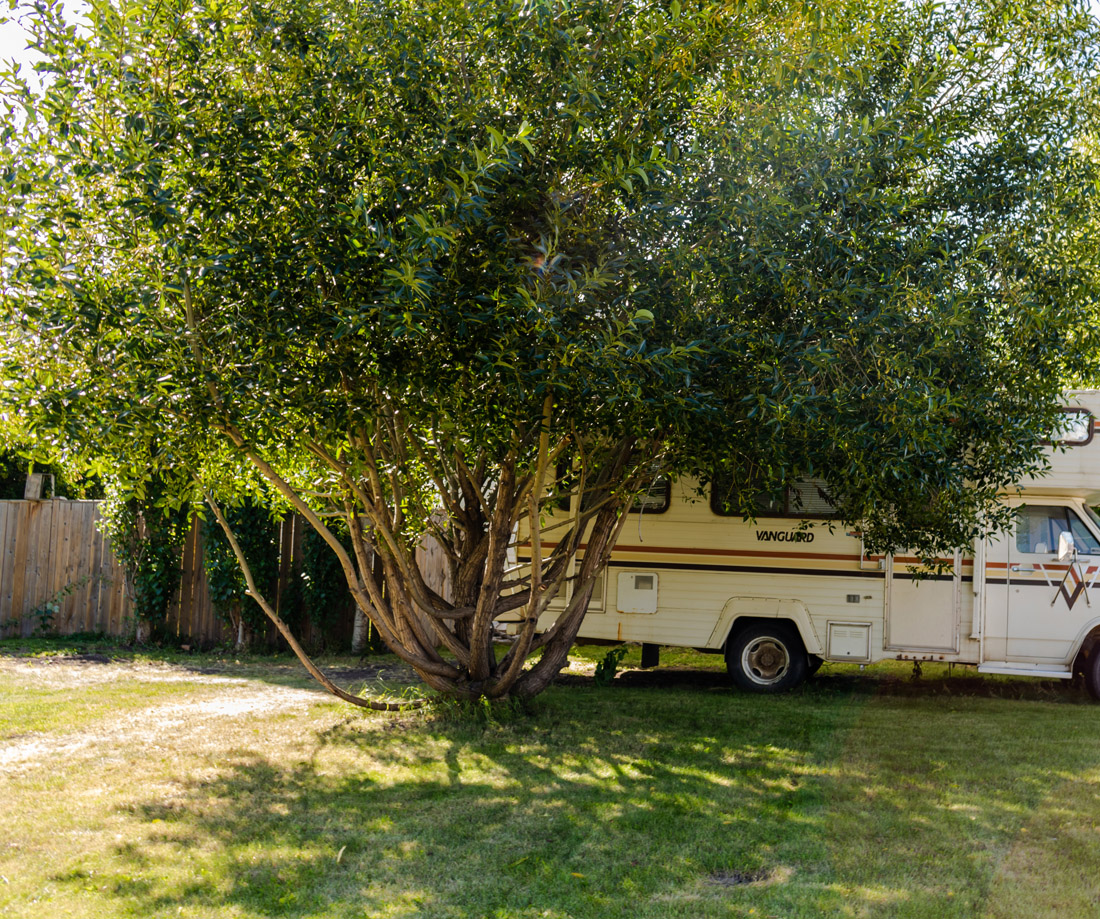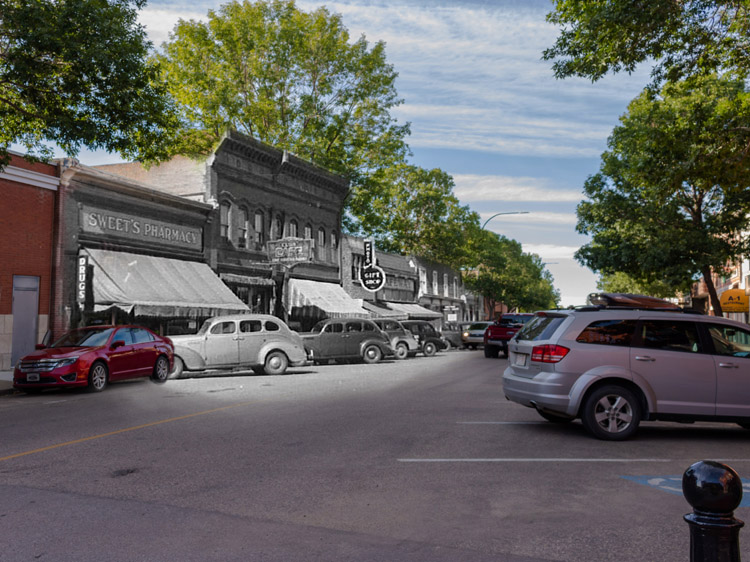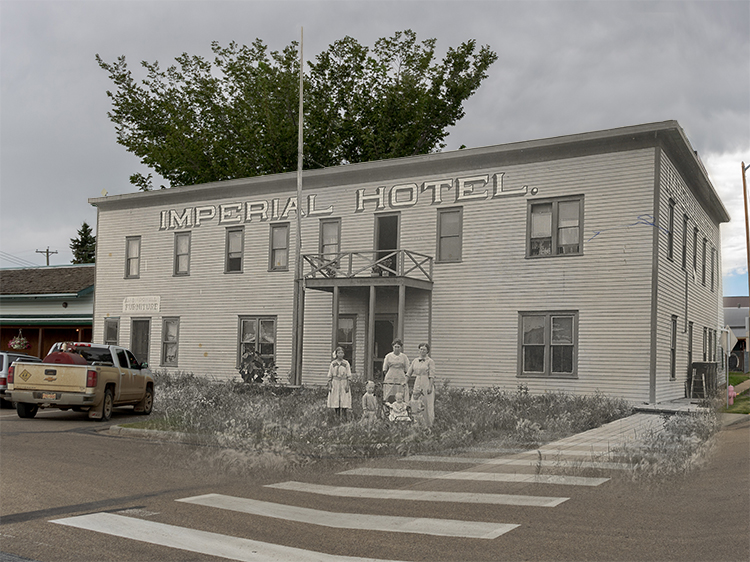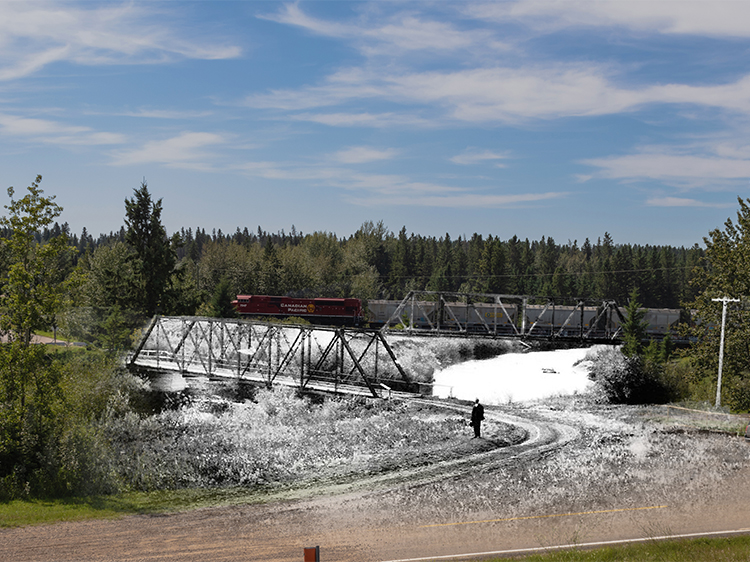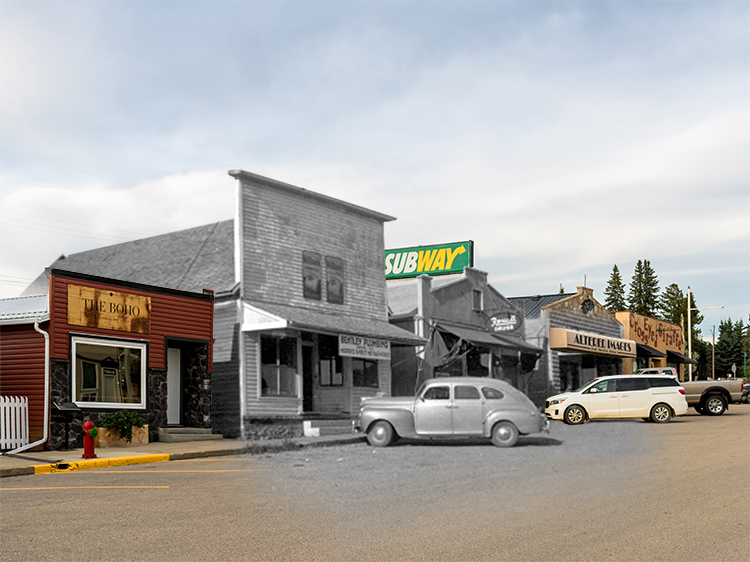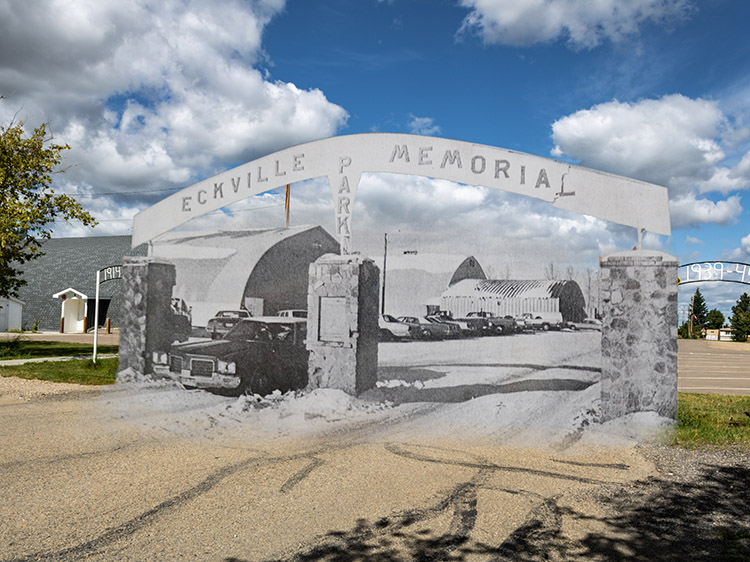Established in the early 1900s, the village was first called Valley City, but was renamed to avoid confusion with a town in Ontario. It became Clive, named for the general behind much of Britain's conquest of India. The first train arrived in 1910, bringing an influx of settlers into the village. Though the trains no longer stop in Clive, today it is a prosperous rural community boasting parks and amenities.
This project is a partnership with Lacombe Regional Tourism and the Village of Clive.
The Village of Clive acknowledges that we are on Treaty 6 territory, a traditional meeting grounds, gathering place, and traveling route to the Cree, Saulteaux, Blackfoot, Métis, Dene and Nakota Sioux. We respectfully acknowledge all the many First Nations, Métis, and Inuit whose footsteps have marked these lands for centuries.
Explore
Clive
Then and Now Photos
The Fires that Destroyed Clive
In 1920 the Village of Clive suffered a severe fire, and the following buildings were burned: The Post office and telephone office, two stores, Bank of Montreal, Egg and Cream Shipping Depot.
In 1937 Clive again suffered from a disastrous fire, with the following buildings destroyed: Two Dwellings, two restaurants, one store, Clive Hotel, two chicken coops and one barn.
In 1954 the third fire and big loss hit Clive when the Creamery was destroyed.
The Morton Block was the only commercial building left that survived all three of Clive’s fires.
Feallison's Cash Store
1907
This was a community building and store for the Seventh Day Adventist
Morton Block
ca. 1910s
The Morton Block has been in the family for five generations and enjoyed by seven. Laurie Hermary is the present owner of the Morton Block Building.
In 1908 when this building was being built, there was a windstorm that shifted the two story 50x60 ft structure to the north. Instead of straightening the structure they kept on building it. There was also another problem with the roof after completion of the building. The roof that was built did not have enough pitch to it, the water just sat on it so there was a second structure roof built. The materials had to be brought in from Lacombe to Clive by horse and wagon at this time the train did not stop in Clive yet.
The United Church
Early in the 1800s, the Mission of the Methodist church organized a mission to be called “Pleasant Valley and Long Valley Mission”. Services were first held in their homes and in 1896, a church was built on the highest hill connecting the two valleys. The church was called Centreview Church and the hill became known as Church Hill--the hill is still known by that name.
After Mr. Patterson left in 1904, there was no one to take his place and Centreview Church officially closed. In 1904, the railroad came through from Lacombe, and Valley City was established, the church services were held in homes.
The conference of the Methodist Church agreed to allow Centerview Church to be moved to Valley City, and a loan of $600 was given to the new project from the Methodist Church Building Fund. The Lacombe congregation were anxious to obtain the building also. So, in 1906, a group of men from Lacombe went out to the Centreview site and worked hard raising the building and preparing it for moving. In the late afternoon they decided to leave the actual moving of the building to the next day. One resourceful parishioner from Valley City, on his way home from Lacombe, had stopped to visit with the group of men who were working at the building; heard what they were doing; said nothing; hurried home and told his neighbors. That night, men with teams under cover of darkness, moved the Church to the foundation in Valley City which had been prepared for it. And it is still there today.
Clive Hotel
1955
Built after the fire circa 1921, replacing the “Big Store” it first served as a Royal Bank and it was converted into a hotel by Carl Sutton. Succeeding owners were Morgan Henderson, Charlie McAdams, and Joe Torick. In 1948 Ali Omar of Rimbey purchased the hotel, complete with coffee shop in the front and their residence upstairs. In 1970 a Teacher Mr. Penkala, purchased the hotel and introduced music. Owners Pete Norris and Don Gillette lived here, adding washrooms, a garage, and hard liquor to their license, the last village in Alberta to receive this privilege. In 1993, Fred Hucul purchased the hotel and added a grill, video lottery machines and off-sales liquor store. The hotel was sold in 2003 to Dale and Susan Bright. Many say that the hotel is haunted.
Clive Fire Hall
The first fire hall was built in 1946 it started out as a butcher shop and then renovated to be the fire hall. The new fire hall was built in 2003 and is jointly owned and operated with Lacombe County. Clive fire department has 19 members and houses 5 emergency response vehicles. Fire training is available for volunteer firefighters. The Fire Chief is Monty Zaytsoff.
The Clive Post Office
On April 30, 1906 F. Allison closed the Post Office in Urquhart/Store (where the Clive Cemetery is today) and moved the Post Office/Store into the new development Valley City. He reopened the Post Office on May 1, 1906. He sold the building to Tom Brereton. A. C. Johnstone built a building and had the Post Office and Telephone moved into this building. Mr. Johnstone sold the building to B. F. Allison. Fred Allison, a grandson, had his real-estate business in this building for several years. The Post Office still stands and is now a converted into a residential home. Which has stayed in the Macpherson Family since 1978.
Mayor Luci Henry’s House
The train station was used for 56 years, then sold and split into two parts; one part being the home of the current Mayor of Clive Luci Henry and the other is being used as a grainery on a farm just outside of Clive.
The Royal Canadian Legion-Clive Branch NO. 171
On March 4, 1946, in the same hall, Mr. D. E. Frasier from Provincial Command came to Clive and installed the first Slate of Officers. This was the starting of Clive Branch NO. 171, of the Royal Canadian Legion.
Clive Auxiliary to the Legion-NO. 171
On March 1, 1950, Mrs. Towers, from the Provincial Command, came to Clive and organized the ladies Auxiliary. Mrs. Towers then installed the first slate of officers for the Clive Ladies Auxiliary to the Legion.
The Royal Canadian Legion-Clive Branch NO. 171 has since shut down and the building was sold in 2008 and remains as a residential home.

